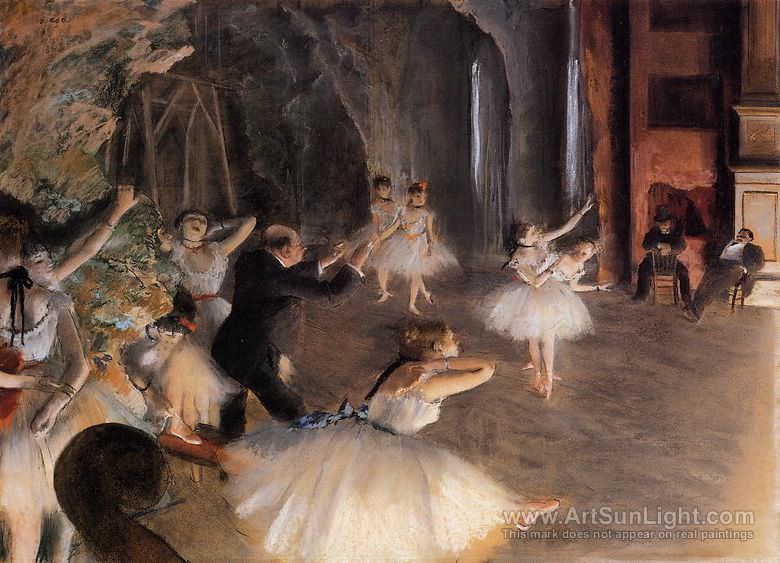The Ballet Rehearsal by Edgar Degas
This is the largest and possibly the earliest of a group of three works on this subject, all with very similar compositions, the other two
being in the Metropolitan Museum in New York. It is the only painting known by Degas to have been painted in grisaille (tones of grey), and his
use of this manner has been explained by the fact that he was at this time trying to establish himself in England through the publication of
engravings, in this case unsuccessfully for the Illustrated London News. A design in grisaille allowed the engraver to transfer it onto the
printing plate without the distractions of color. Shown at the First Impressionist Exhibition of 1874, the unusual medium and soft manner of
execution led some visitors to mistake it for a drawing and it was particularly praised for its extraordinary effects of light and shade.
In the other two versions there is a dancing master in the center, next to the dancer stretching with her arms behind her head. There is also
another male onlooker slouched on a chair next to the one in the top hat. Both figures were originally in this painting also and, though later
erased, their traces are still visible. The absence of the dancing master renders the work somewhat baffling: the dancers all appear to be
relaxing apart from the pair at the front of the stage, who were originally being instructed by the master. Without any apparent direction, their
activity seems somehow purposeless. Furthermore, the depiction of the seated man in the top hat, previously quite explicable as an unofficial
spectator, now appears ambiguous, indeed disconcerting. Positioned as though he ought to be somehow involved in the action, he merely stares
impassively at the scene before him. This inclusion of a male spectator is quite common in other of Degas' images of dancers and presages the
later, more intimate scenes of women at their toilet, in which the presence of the male onlooker is merely implied through the perspective of
the viewer.
